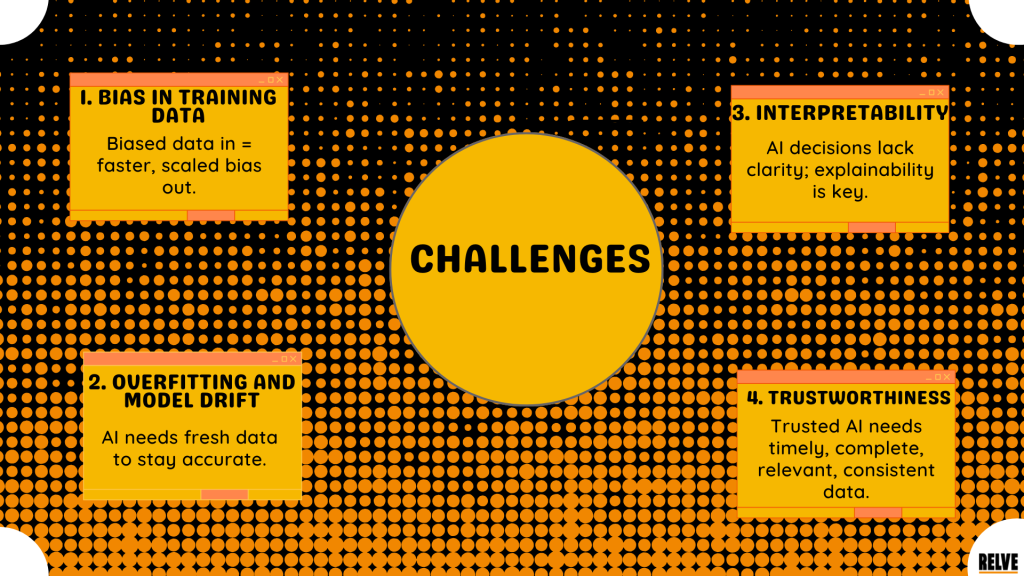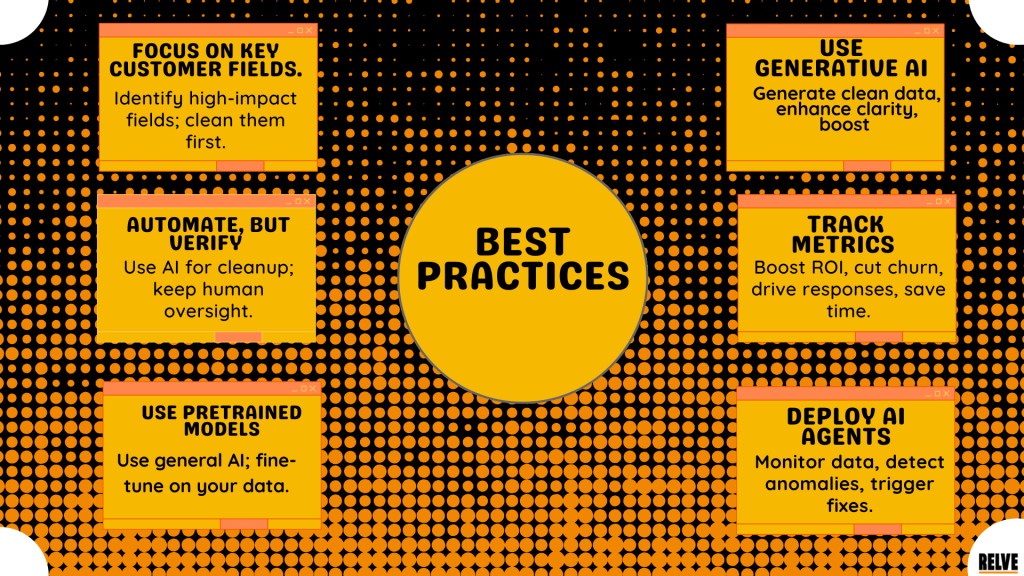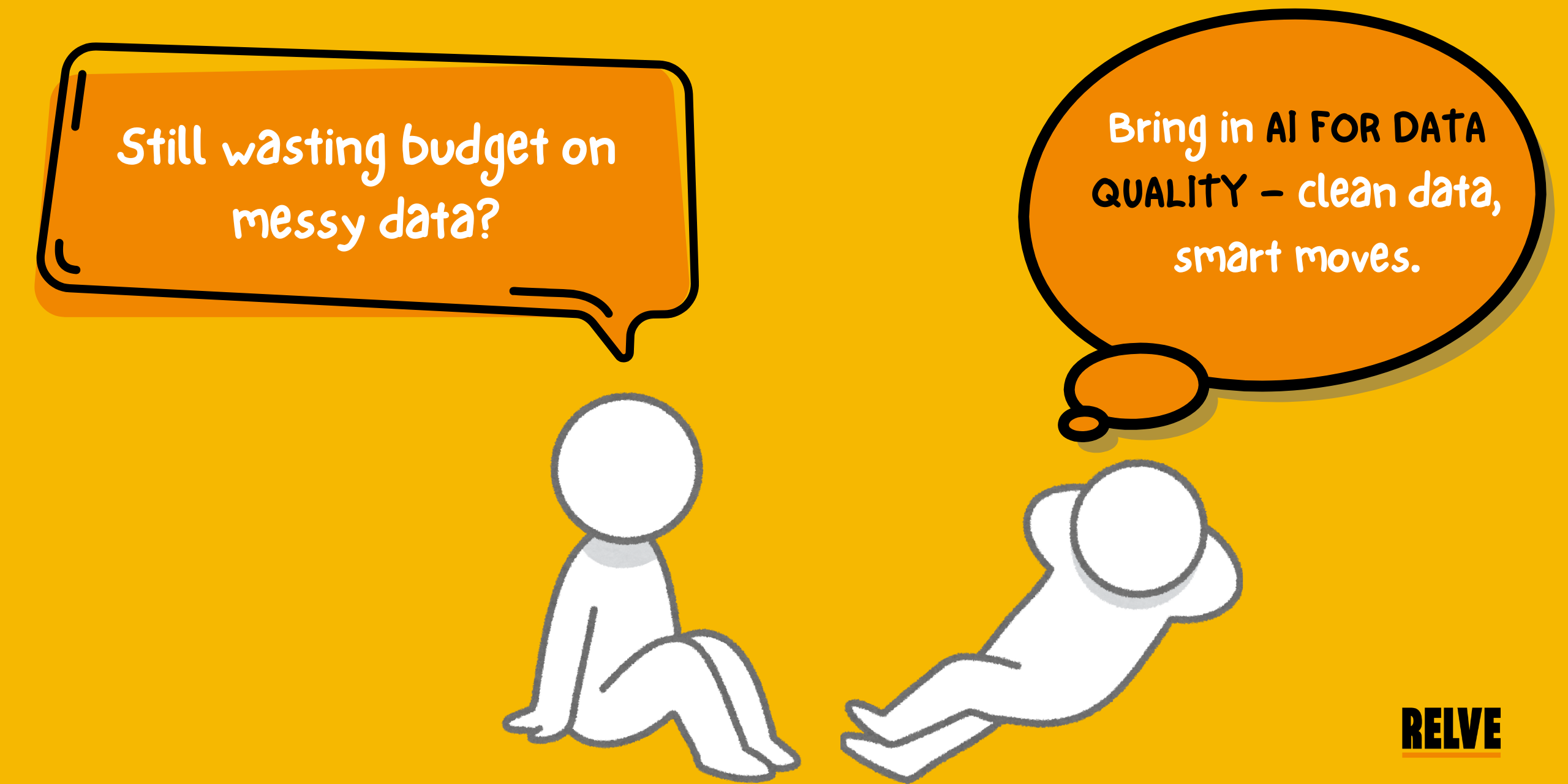Customer data is the fuel for every modern marketing engine – but what if your fuel is contaminated? Today, AI for data quality isn’t just a buzzword – it’s the silent hero that helps B2B marketers, data teams, and enterprise leaders cut through the noise and get real value from customer insights. Eighty-eight percent of organizations believe that insufficient data directly impacts their bottom line, and poor-quality data costs U.S. businesses over $3.1 trillion annually.
Today, we will conduct an in-depth exploration of how artificial intelligence is transforming the data quality landscape – not just as a tool, but as a strategic game changer.
Why Data Quality Management Should Be Your Top Priority
Data quality is no longer a backend concern. It’s a front-line issue that affects every department, from sales to customer support to C-suite forecasting. If your customer database contains duplicate leads, incorrect email addresses, or outdated information, your entire marketing strategy suffers.
88% organizations are grappling with data quality issues, and the time to act is now.
For example:
- Sales teams waste hours chasing unqualified or unreachable leads.
- Marketing campaigns experience higher bounce rates and lower conversion.
- Customer service can’t personalize interactions or effectively address user needs.
- Product teams get misleading feedback based on fragmented or inaccurate user behaviour.
The High Cost of Dirty Data
Let’s break this down:
Clean data = better targeting, higher ROI, and stronger customer relationships. It’s that simple.
But cleaning customer data manually? That’s where the real problem begins – and where AI steps in.
How AI-Powered Solutions Fare Against Traditional Methods
We are going to look at traditional data quality management methods with AI-powered data quality alternatives, weighing their pros and cons.
Traditional Data Quality Management
Let’s say you’re relying on Excel sheets, manual reviews, or basic scripts. You may be performing periodic deduplication, checking for syntax errors, or occasionally auditing profiles. These efforts are:
- Time-consuming
- Labor-intensive
- Reactive instead of proactive
Traditional methods often fall short because they rely on static rules and human inconsistency. And as your datasets scale, so do your problems.
Enter AI-Powered Data Quality Solutions
AI solutions for data quality management are changing the game by bringing intelligence to your workflows.
Here is how they differ from traditional data cleaning and matching methods:
| Traditional Method | AI-Powered Solution |
|---|---|
| Rule-based matching | Deep learning entity resolution |
| Manual deduplication | Automated pattern recognition |
| Static scripts | Adaptive, self-learning models |
| Batch updates | Real-time stream processing |
| Basic alerts | Predictive anomaly detection |
AI models trained on diverse datasets can learn nuances in customer behaviour, language, and formatting that rule-based systems miss.
Example: Smart Merging with AI
Rather than manually determining whether “Jon Smith” and “Johnathan Smith” are the same, AI employs probabilistic matching, behavioural context, and even email/IP patterns to unify identities.
Example: Language and Location Correction
AI can auto-correct mislabeled fields, translate text, or standardize phone numbers using pre-trained models – no human intervention needed.
Challenges of Ensuring Data Quality in AI
Understanding the key components of high-quality data in AI enables the development of more robust systems and helps prevent hidden errors that can scale.

Best Practices for Using AI in Data Quality Management
So how can businesses use AI responsibly and effectively to clean customer data at scale? Below are best practices for data quality in AI environments:

The Future in B2B Marketing
B2B marketers, in particular, face high stakes. Why?
Because every harmful lead wastes not only ad spend but also sales hours and CRM space.
Why B2B marketers must prioritise the quality of data and AI is not a question – it’s a strategic imperative.
As AI continues to mature, we’ll see:
- More low-code data quality platforms powered by AI
- Embed agentic AI in marketing automation tools
- Use of behavioural data to enhance segmentation accuracy
- Fully autonomous pipelines that clean, enrich, and validate data continuously.
✅ Is Your Data AI-Ready?
Tick the boxes below to assess your data readiness:
Conclusion: Clean Data Gives You the Competitive Edge
With today’s scale and complexity of customer data, traditional data quality methods are no longer sufficient. Fortunately, it provides a fast, scalable, and increasingly accurate method to reduce noise and enhance business impact.
But remember: AI isn’t magic. It’s a tool. And like any tool, it’s only as good as the strategy behind it.
To win in today’s data-driven world, B2B teams must pair smart technology with smart processes and make data quality a core pillar of customer success.
💡 AI Data Cleaning ROI Calculator
Frequently Asked Questions
What is AI for data quality?
It refers to using artificial intelligence to automate, enhance, and scale the process of identifying, correcting, and enriching datasets – especially customer data.
What are the key components?
Accuracy, completeness, consistency, timeliness, and relevance – all crucial to ensuring reliable AI outputs.
What are the challenges?
Biased training data, model drift, lack of explainability, and inconsistent input formats can all lead to unreliable AI results.
How can AI help clean data at scale?
AI utilizes pattern recognition, language processing, and real-time validation to detect errors, resolve duplicates, and auto-enrich records more efficiently than manual methods.
Is using AI cost-effective?
Yes, especially for large datasets. It reduces manual overhead, improves ROI, and minimizes wasted resources on bad leads or campaign mismatches.
